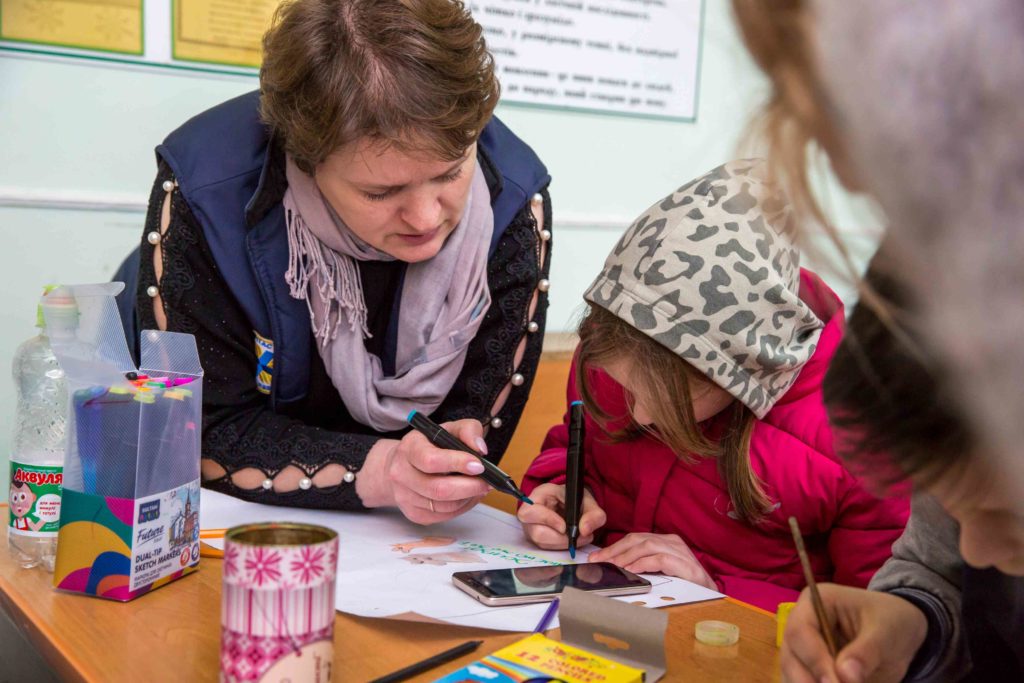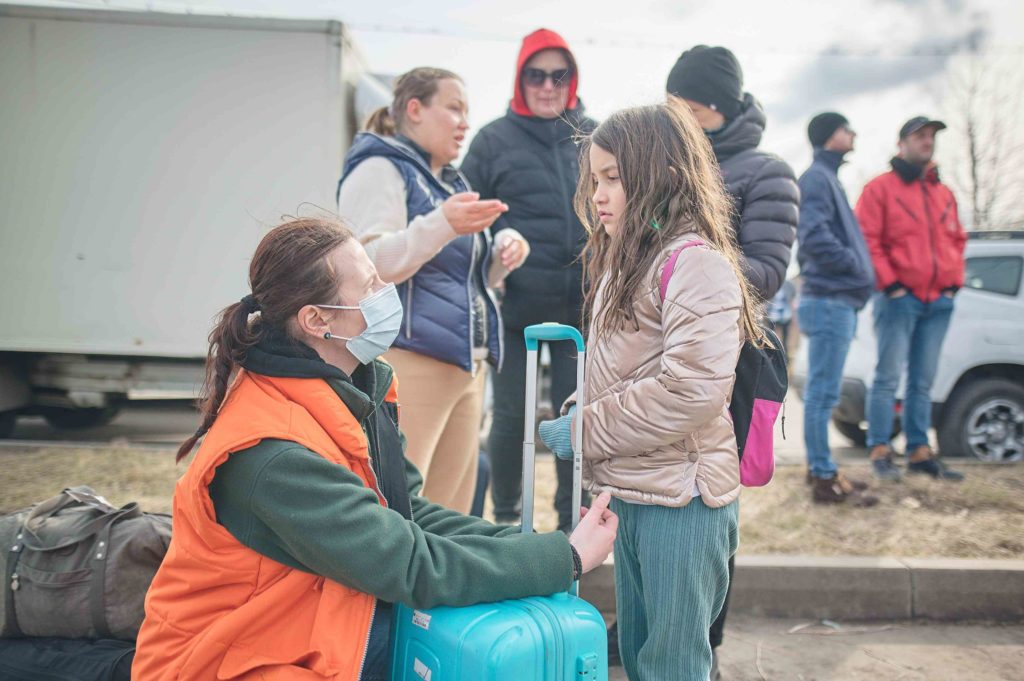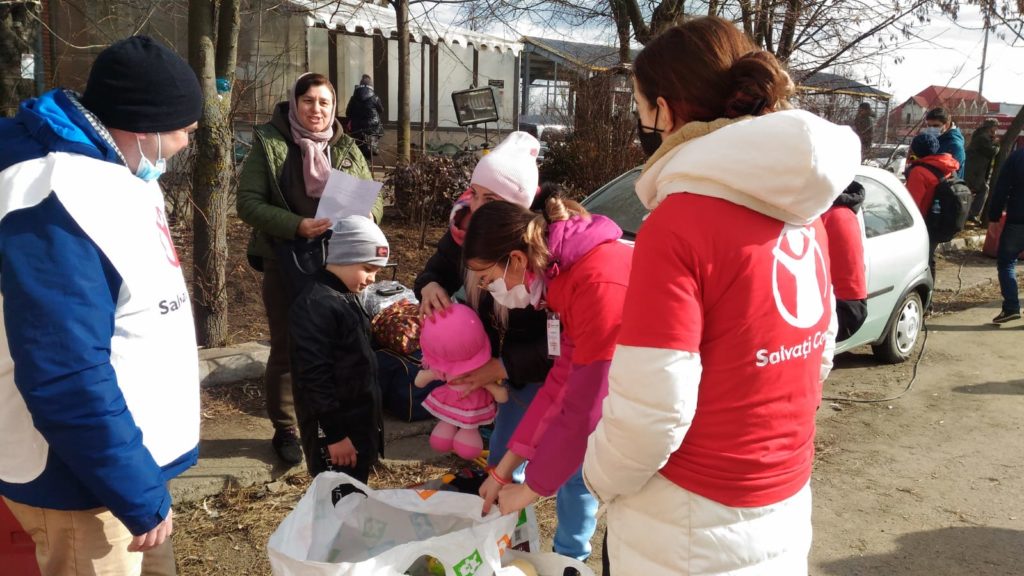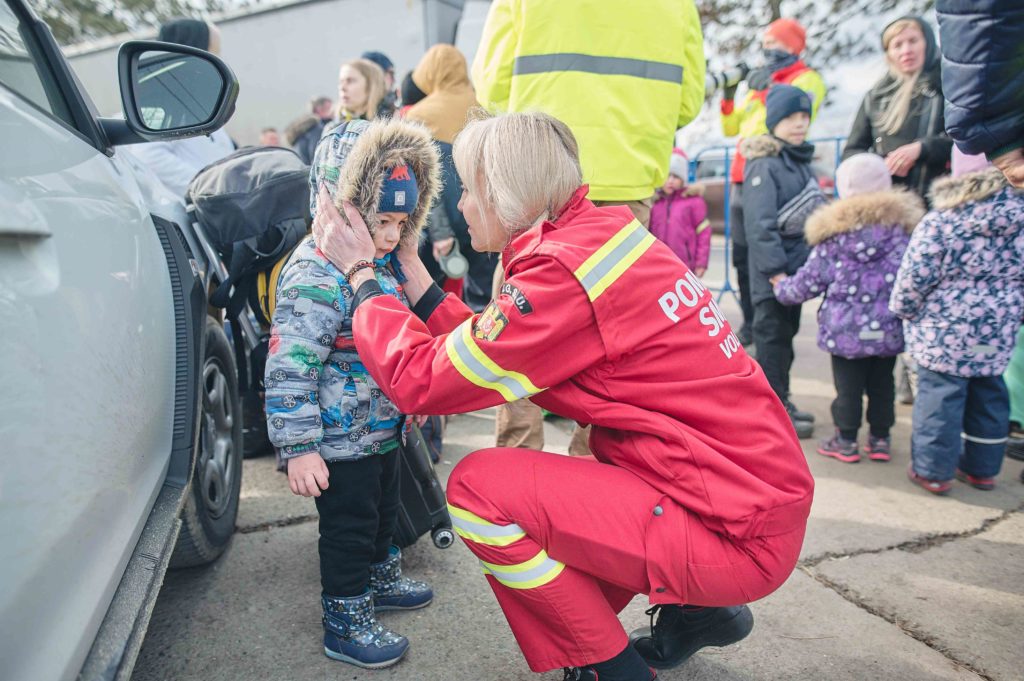How to talk to children during a crisis
Posted: 21 Apr 2022It can be hard enough to get your own head around an ongoing crisis situation, let alone explaining it to an inquisitive child. Here are some useful pointers to help get the conversation started…
Children are naturally curious and inquisitive, and that means that during a crisis they’re bound to have a lot of questions. Of course, they may also have their own fears and concerns, both for themselves and for those directly involved, and so talking to children and answering their questions can feel like an intimidating prospect.

Photo by World Vision – WV Romania staff members Nicoleta Popa and Alberto Roca with Ukrainians on the border with Romania called Vama siret.
To help put everyone’s mind at ease, the likes of Save the Children and the British Red Cross have put together some useful guides on talking with children, with the latter hosting a wealth of great educational resources to help learners discuss and understand a range of related issues and situations. Here are some of the key elements you might want to consider to help make the conversation go a little smoother and hopefully be more rewarding for all involved!
Be Impartial
Conflicts and other crisis scenarios can be a difficult and emotive topic that can impact on people in different ways, especially with children. Before you start the conversation, it can help to try and evaluate your own feelings or possible biases on the subject. It’s not too unlike our article looking at verifying news information, only here you’re the source, so try to make sure you’re dealing with facts and not allowing your own emotions to influence the discussion.
Not that you should ‘turn off’ your feelings entirely; just try to appreciate that children may interpret the situation in a slightly different way. Remember, your aim is simply to get them to better understand or process the events to help put their minds at ease, and this needn’t be aligned with your own opinions. Among the seven key principles the Red Cross Movement follows are neutrality, impartiality and humanity, and applying those to a crisis situation is a good foundation for any discussion.

Photo by Igor Shokha & Photo Shokha Studio: Children take part in art therapy at one of the safe places set up by CAFOD partner Caritas Ukraine in Boryslav
Prepare What to Say
The British Red Cross offers a checklist of questions to ask yourself before addressing a classroom: What do your learners want to talk about? How are your learners feeling? What can you do to help your learners? What could learners learn about? Even if you’re dealing with a single child, it’s worth considering these questions to help you frame the conversation you may have.
Create a Supportive Environment
It’s important to remember that children can have personal connections to an ongoing crisis, which can extend into other issues such as race, migration and national/cultural tensions, so be sure to accept and empathise with any concerns they may express. It can also be important for your impartiality to extend into not simply painting one side as the ‘bad guy’ and de-humanising those involved, as that may help fuel a ‘monster’ that could add to the child’s fears.

Photo by World Vision – Movement of Ukrainians on the border with Romania called Vama Siret.
Answering Questions
An all-important part but arguably the trickiest one. The first step is to positively acknowledge each question, even if you don’t fully know the answer. It can encourage children to be confident enough to ask questions and opens up scope for a discussion from both sides. It’s perfectly okay not to know all the answers. Be honest about your own understanding and knowledge of events and if you don’t have the answer perhaps you can team up together for a little research to help you both make things a little bit clearer!
Be Clear and Concise
Children are great at asking lots of questions, so try to keep your answers direct and to the point. Don’t elaborate too far on an issue if the child doesn’t ask you to and try to remember to keep your impartiality intact, responding more with factual information than your own personal viewpoints.

Photo by Save the Children: All children received toys. Water, juices, hygiene kits, face masks, perishable foods, kits for newborns (pampers, wet napkins) are available for every single family that crosses the border. We are also offering flyers that contain necessary information.
Take Their Fears Seriously
This may sound obvious but, as mentioned, children can interpret and analyse events in different ways to adults. They may not agree with everything you say, or have some strong opinions of their own that might not align with your own feelings, so try to be understanding of their views, ideas and worries, and not force your own upon them.
Offer Them Hope
This may be easier said than done, but you want to help make the child feel reassured about the situation. Explain how it’s adults who have the responsibility to find solutions and that are many very good people working on doing just that right now. There can be a sense of powerless in these situations that may be a source of anxiety, so you might want to suggest ways that they can also get involved to help those it does impact.
This could involve supporting fundraising events in the local area or even just making a small donation to a related charity to let them know that they can make a difference. Similarly, encourage them to learn more about the crisis and show their support to those directly impacted by it, as kindness and compassion can also be very welcome commodities to share as part of any relief response.

Photo by World Vision – Romanian firefighters helping Ukrainians on the border with Romania called Vama siret
Take a Break
Similar to how we’d recommend taking a break from the ongoing news cycle to give your mind a breather, you don’t have to squeeze in a full discussion about something like Covid, Ukraine, or Israel and Palestine in a single sitting. Feel free to let the conversation drift into something completely different to give you both time to process the difficult topics and perhaps let something fun lighten the mood. You don’t want to force the conversation, so let the child lead if and when they want to revert back to more serious issues.
Fake News
As discussed in our article on verifying information, there can be a lot of misinformation, particularly on social media, spread during a crisis and children will as vulnerable to it as most. Explain to them that false, or at best misleading, information can be appearing on their platform of choice and that they should ask you (or another adult) if they’re unsure if something is true or not. As with the confidence to ask questions, being able to understand that not everything they read may be strictly true is an important step in helping them to process their day-to-day interactions with the evolving events.
